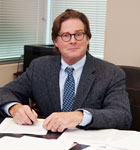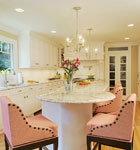At a Glance
Location
Boston, MA
Founded
2001
Employees
More than 5
Specialties
Design, development, and marketing
Annual Sales
$20 million
You grew up in Tehran, Iran, and moved to the United States in 1975 with aspirations to become a builder/developer. Do you remember what first drew you to the profession?
Kamran Zahedi: I basically loved building and architecture. I had a passion for good design-building practices. I also loved the way architects could design a building from scratch. While I was attending MIT for my civil engineering and architecture studies, I would go into the studios and just sit there and stare at the models of the buildings they were working on. It just fascinated me.
Was it difficult to get used to architecture in America after having grown up with the architecture in Tehran?
KZ: Some of Iran’s architecture goes back thousands of years, and I was very interested in the design of features such as exquisite domes and mosaics. Buildings in this part of the world have a very different style. When I came to the United States, it was different. New England architecture wasn’t as interesting to me until I came across the works of Henry Hobson Richardson. He was a genius in my eyes.
What did you learn from architects such as Richardson?
KZ: Richardson studied in Europe. He took the classical building styles from Europe and made them fit to this region. I realized that my strength was not going to be found focusing on just one building at a time. I wanted to provide modern yet simplistic designs. Simplicity is in my nature. I don’t want to copy the old. I never have been able to understand architects that go out there and create replicas of what’s already out there with much better quality and workmanship. I like to say they are creating McMansions or Disneyland. I don’t have sympathy for that kind of work. Take an iPad for example. An iPad is simple but trendy, social, and functional. That’s my goal when it comes to the buildings we create, whether residential, hotel, or retail.

Tell me a bit about your first official project.
KZ: After graduation, I traveled north and ended up working on an old mill in New Hampshire. A few years later, I purchased property in Boston and created a small boutique hotel. [Taking] an unused space or site that had been vacant for years and [turning] it into a fully functional living and working space that would enhance the neighbourhood and get people working again was quite rewarding to me. Since then, I have come to find Boston does not have a ton of vacant land. I have had the chance to work on many projects that went far in revitalizing the area in which they were located. I like to work in the historical context but bring something new to the table.
Constantly bringing something new to the table can be challenging. Where do you find your inspiration?
KZ: People and their needs for better things inspire me, whether it is [something needed] economically or socially. I’m also inspired by geographical areas that are underutilized where I know my team and I could go in and change [their] history. I usually don’t work in the high-end areas for that exact reason. I’d much rather work on the outskirts of town in underutilized areas or inner cities and bring something entirely new. Energy is powerful. I also am dedicated to being inherently green. It’s about sustainability and social responsibility at the core, and with those ideals in mind, one can create amazing things.

Do you ever relax?
KZ: [Laughs.] I’ve been trying to … and I’m starting to get better at it. Even when I try to relax, I constantly have pictures running through my mind. I also read a ton of architecture books and magazines. I should travel to relax, but I often find myself in either New York or Europe, looking for new inspirations. I’m always trying to find new ways to do new things. I like to find what people are doing elsewhere—to find the new places and bring the ideas home with me, whether they are considered out-of-the-box or not. ABQ


